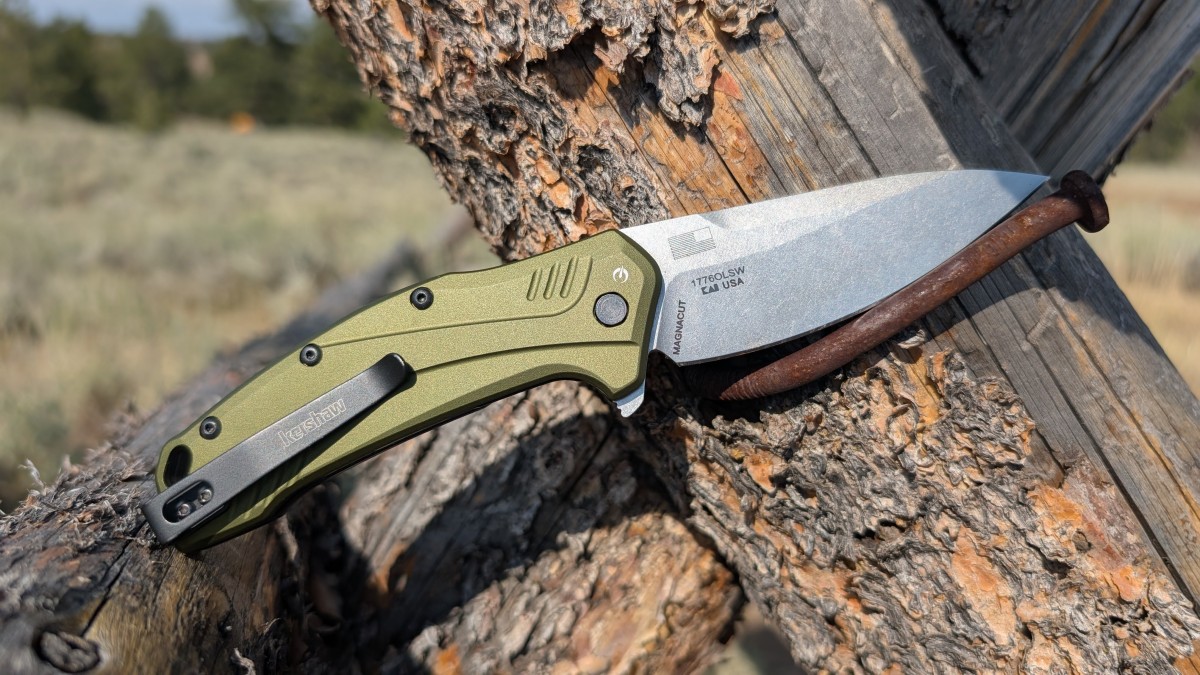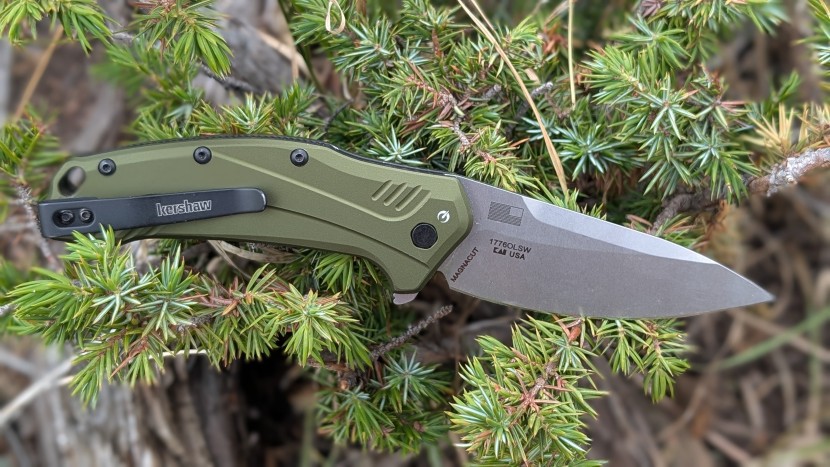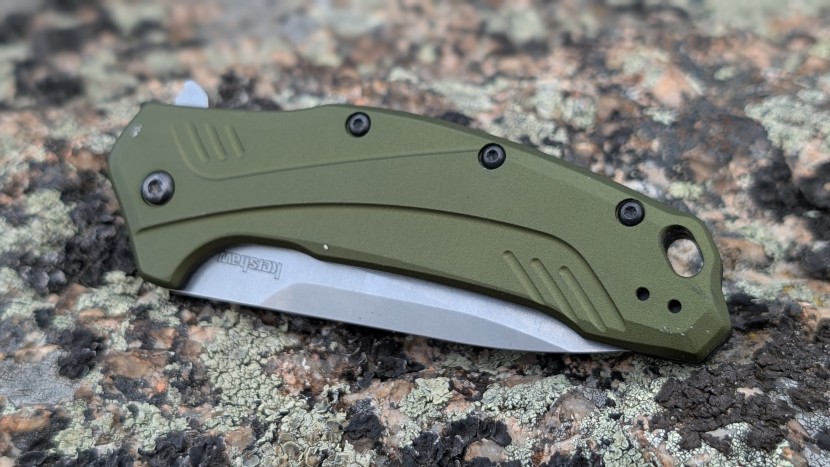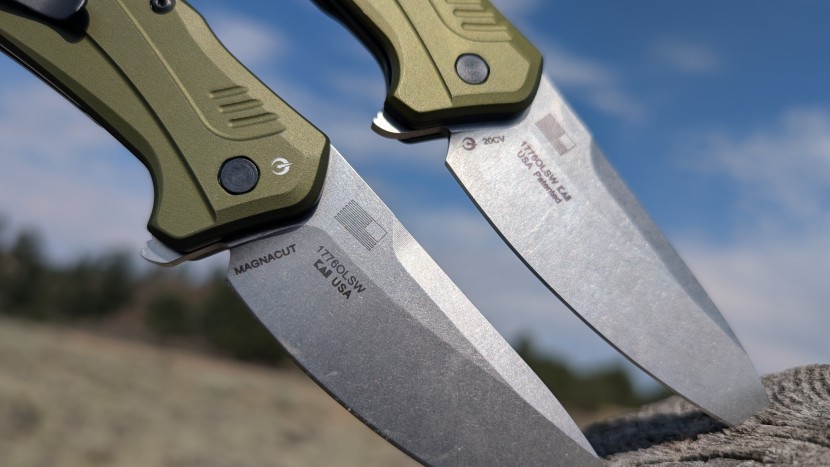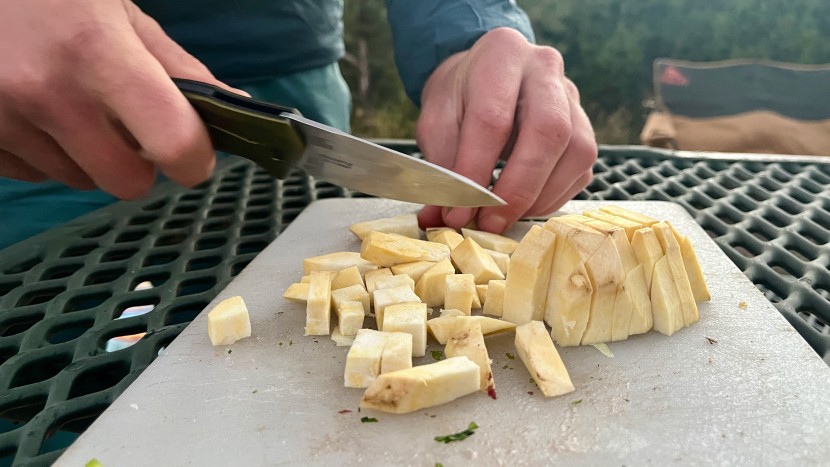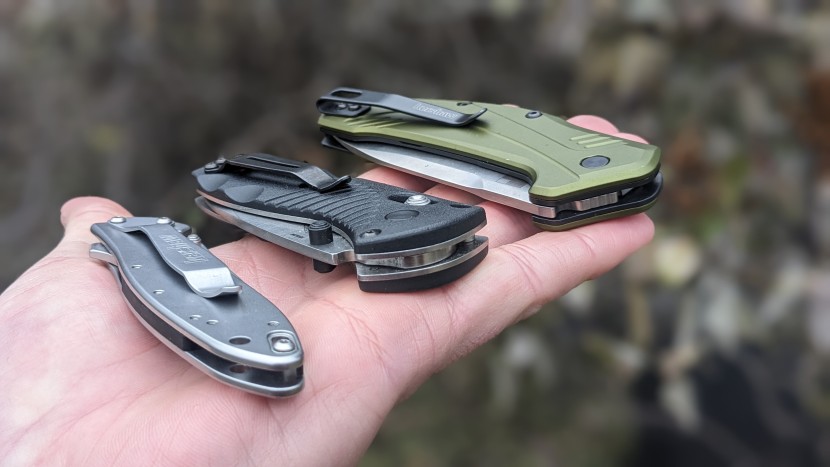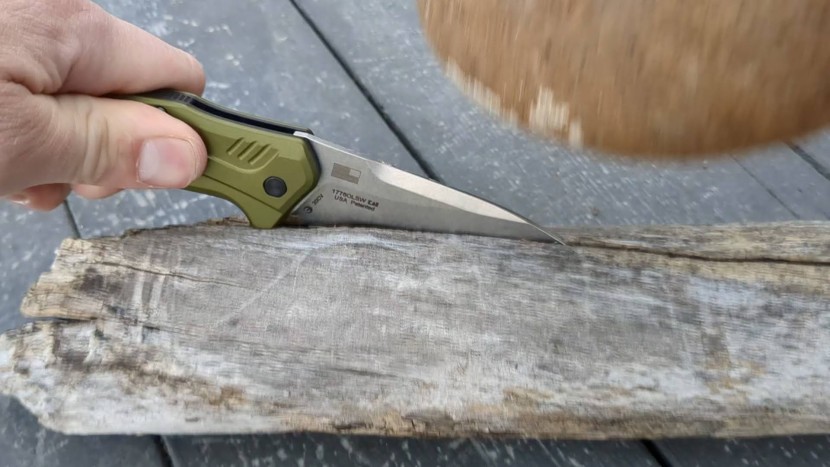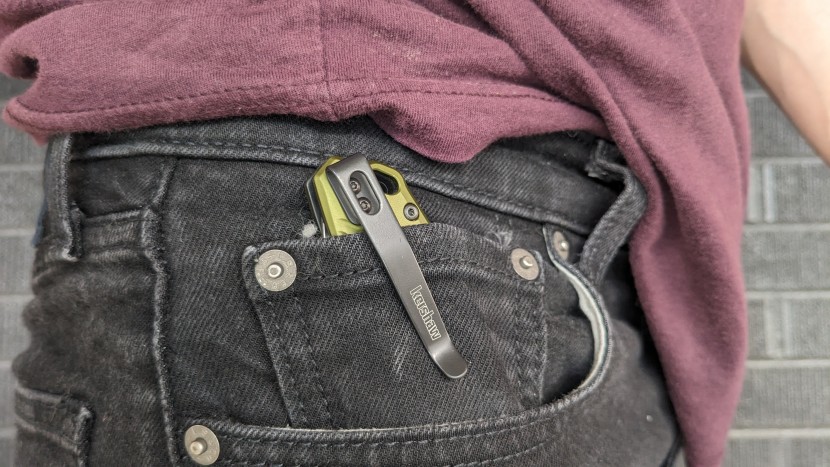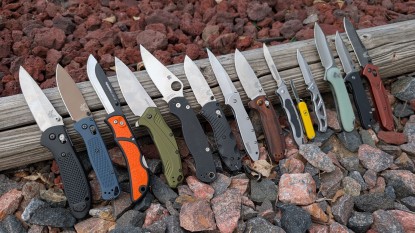
Our Verdict
Our Analysis and Test Results
One of the bulkiest and heaviest pocket knives we have tested, the Kershaw Link stands out with a tall blade and all-metal construction, well suited for big cutting jobs that may take hours. This extra mass allows you to really throw your weight into tasks that require some extra 'oomph'.
Blade and Edge Integrity
The Kershaw Link's blade is 3.31 inches long, one of the longer in our lineup to be sure, but we'd argue that its height (and the deep belly to match) is more striking. The blade is also extra thick at 0.11 inches (2.7mm), and this is one of the best 'wedge' blades we've seen; great for prying and twisting stubborn material apart.
More importantly, though, is the CPM MagnaCut stainless steel alloy used for the blade. MagnaCut is a recent upgrade on the Link, and it alone is justification for the $200 bones needed to acquire it. This is a big change for the Link — it's been the effective 'standard' example in the industry of the CPM 20CV alloy on a pocket knife for quite a while. 20CV is renowned for its corrosion resistance, but more so for its unmatched edge retention. There were drawbacks, though: you wouldn't need to sharpen 20CV for a long, long time… but when you did, it was far more difficult than most high-end steels. That hardness also came with a noticeable brittleness, and it was unfortunately prone to the occasional chip.
MagnaCut effectively removes these weaknesses, while keeping the excellent corrosion resistance and edge retention. Colloquially, what we've noticed with MagnaCut knives is that they are much easier to sharpen than the old 20CV Link we still have, but while MagnaCut stays sharp longer than nearly every other knife we've seen, 20CV does still keep the best edge, period. Bottom line: MagnaCut is the only steel we think worthy of a change away from 20CV for a knife as tough as the Link.
Undeniably, the Link's large blade is overkill for users who want a simple knife on hand for occasional tasks like opening packages. But if you need a knife to handle extended outdoor use, endless food preparation, or professional performance, this blade is up to the task. After days of use, we couldn't detect a reduction in blade sharpness and weren't able to damage the blade during heavy-duty use.
Ergonomics
As good as the blade is, the Kershaw Link is also surprisingly comfortable and easy to use. The pocket clip is oriented with the blade's tip facing up in the pocket, so you don't have to rotate the knife in your hands after removing it to flick open the blade. This is our preferred orientation of the pocket clip.
Don't worry, the assisted opening feature won't accidentally deploy in a pocket. It's initiated by pulling down on a small flipper tab with the index finger. The flipper takes some force to kick open, but the action is fast, smooth, and very secure.
Once the blade is open, the handle fits comfortably into the palm. The grip is a full 0.5 inches thick –- thicker than the majority of those tested in our lineup -– which makes it easier to use for serious cutting tasks where you need to maintain a solid grip on the tool. The pocket clip is out of the way of your fingers, adding to the comfort. Our testers felt very secure holding this knife for consequential cutting tasks.
Portability
The Kershaw Link is unabashedly heavy, weighing 4.75 ounces and having a bigger footprint than many knives on the market. The result is a larger-than-average package that is noticeable when worn in a pocket or carried in a backpack.
For professional users, serious outdoor enthusiasts, campers, and hunters, the portability shortcomings are worth the hassle, since the knife's performance is so strong. Many users looking for a pocket knife will only use the tool for everyday carry and occasional use, such as cutting cardboard and similar tasks. For these users, a smaller and lighter pocket knife will suffice. This is a seriously strong knife geared towards heavy-duty use, and as such, it has a larger footprint and heavier weight than most other pocket knives on the market. Everyday users with big tasks ahead will appreciate this strength and size, but occasional users won't.
Construction Quality
This knife is built to last. The Link's housing is built from aluminum, which is nothing to write home about, but the pivot and lock feel as secure as anything else we've tested. MagnaCut, like 20CV before it, is one of the hardest metals used in knife production, and the thick blade only tapers down to an edge at the last moment, meaning the blade is strong and can take a beating. There is absolutely no detectable flex or bend in the blade or handle during use.
One downside of the design of this knife is the locking mechanism. The liner-style lock is a thin internal metal flap that clicks into place along the bottom of the handle as the blade pops open. This is the most common lock type seen on knives today, and our least favorite. It is generally very secure, though we will note that contact of the lock against the bottom of the blade does look a little too flimsy to handle the intense work this knife can dish out. However, the main downside of liner locks is that the blade then folds closed towards your fingers once disengaged. It's just fundamentally less safe than locks built into the spine. It's not a deal-breaker, of course, but we do hope that Kershaw makes another update to the Link in the future, this time to the lock.
Should You Buy the Kershaw Link?
The large blade and heft of the Link are best compared with the sturdiness of a fixed-blade knife, but the total package still offers the convenience of a folding pocket knife. Considering its quality construction, excellent blade steel, and ergonomics, this knife presents great value despite its top-of-the-line price tag. It is a worthy investment for anyone who uses a pocket knife daily. If you work outdoors, camp, hunt, or cut things regularly for your job, then the Link will not let you down. But if you are looking for a low-profile pocket knife for everyday carry and occasional use for mundane chores, this knife is overkill.
What Other Pocket Knives Should You Consider?
The premium Benchmade triplets, Mini Barrage, North Fork, and Osborne, are excellent choices if you're already considering a knife in this price range. They're more all-around highly performing knives, slightly more compact, yet still fit fully and comfortably in hand. The even more expensive Spyderco Para Military 2 G-10 is one of the few other highly-ranked larger knives we've assessed in our lineup that also merits kudos for an excellent design. Alternatively, the Benchmade 535 Bugout is a much lighter-weight full-sized knife that sells for a similar price to the Kershaw Link, which we like as an everyday carry option.


